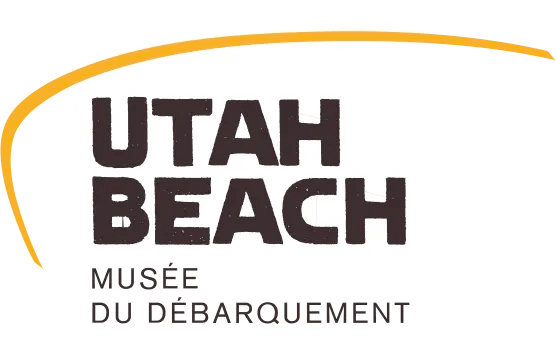Temporary exhibition
The battle of Brécourt Manor: a buried memory
Temporary exhibition on the archaeological excavations of this famous D-Day battle.
Sommaire

A Rediscovered Historic Site
Located 4 km southwest of Utah Beach, the Brécourt Manor was the scene of a legendary battle. Archaeological excavations, conducted by Bordeaux Montaigne University in partnership with the Utah Beach Landing Museum and supported by the Ministry of Culture, have made it possible to explore this site. The first excavation campaign took place in 2022 and uncovered remains that help preserve the memory of these events
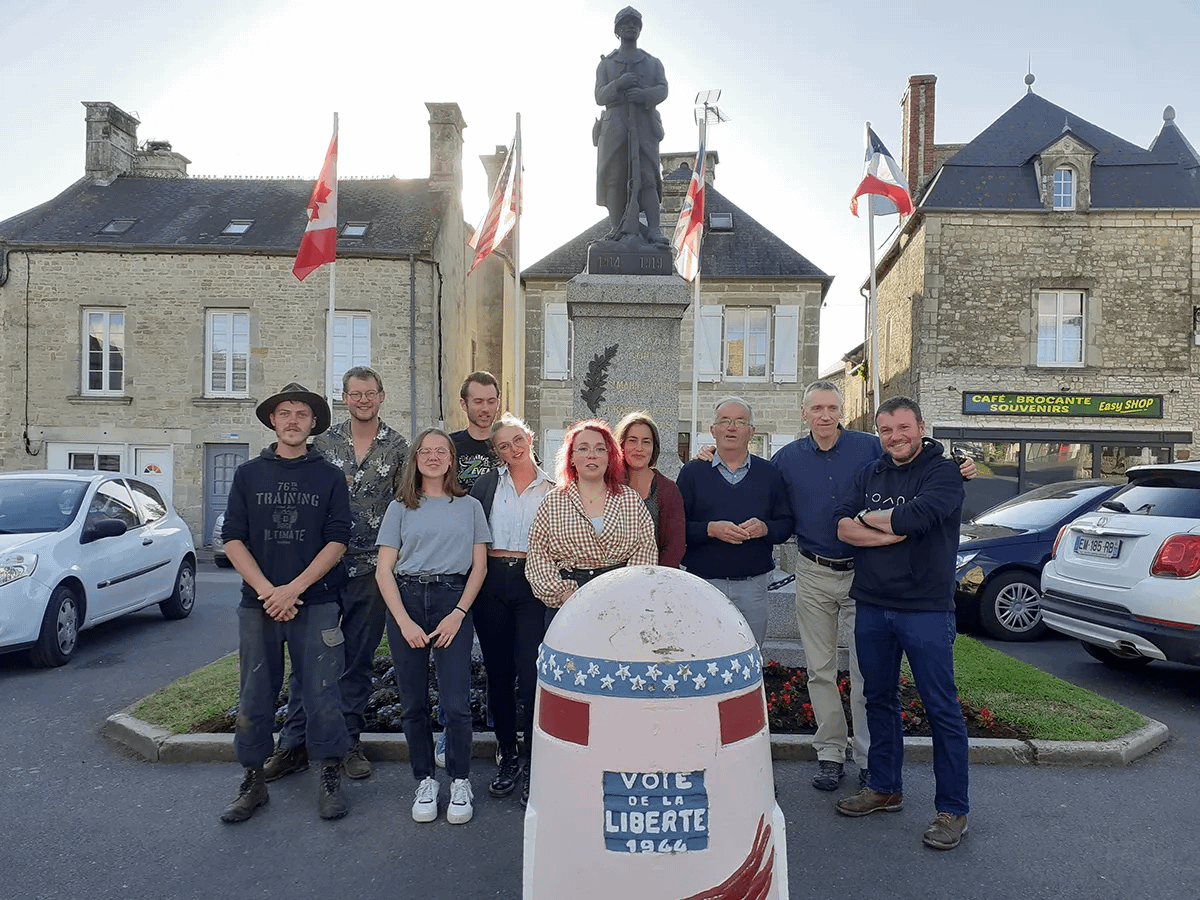
From Memory to Myth
On the morning of June 6, 1944, paratroopers from Company E of the 506th Regiment of the 101st American Airborne Division attacked a German artillery battery targeting Utah Beach. This battle, recounted by several American witnesses, was popularized by Stephen E. Ambrose’s book Band of Brothers (1992) and the eponymous mini-series (2001).
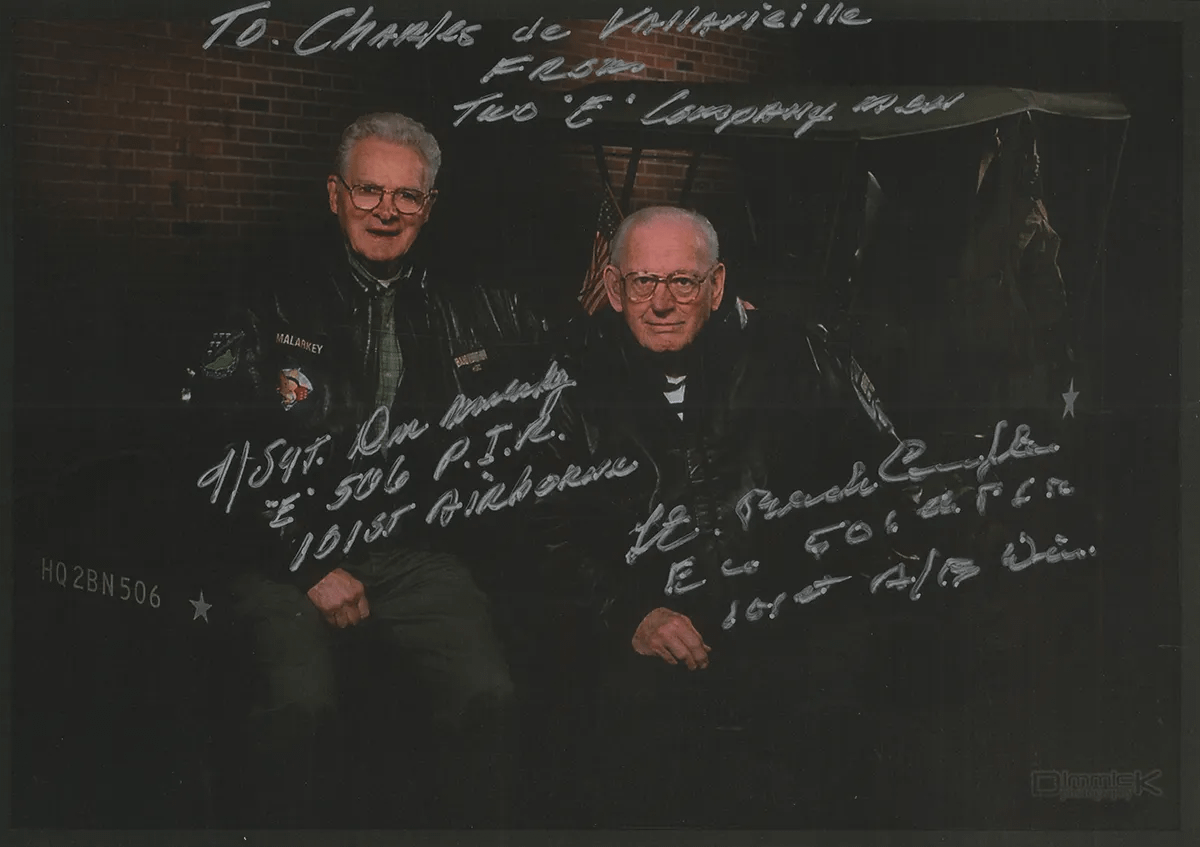
The Evolution of the Historical Narrative
The struggle, that took place there, remained in the shadows for several decades and was first mentioned in 1948 in La Brèche de Sainte-Marie-du-Mont by François Lemonnier Gruhier. In the 1970s, George Koskimaki gathered the first testimonies from soldiers, which were further reinforced in 1984 by the research of Michel de Vallavieille and his meeting with Richard Winters, the officer who led the assault. A memorial honoring the paratroopers of Company E was inaugurated in 2008, followed in 2012 by the monument dedicated to military leadership.

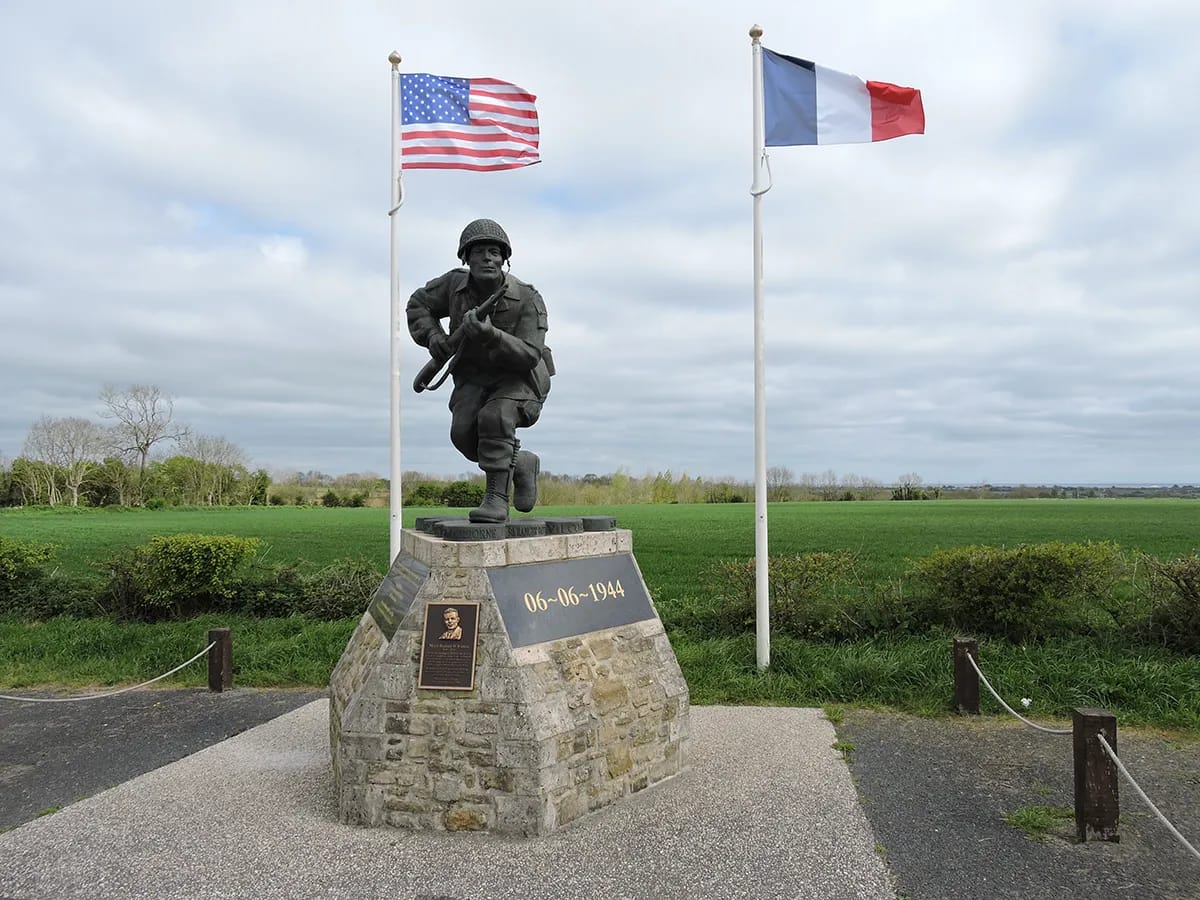
A Battle with Diverging Narratives
The narratives of the battle differ regarding the placement of the German cannons and their caliber (88 mm or 105 mm). The identity of the German unit also remains uncertain: some sources attribute it to the 6th Parachute Regiment, while others suggest the 90th or 191st Artillery Regiment.
The American Strategy
The assault was carried out according to the “Fire and Manoeuvre” doctrine: a base of fire covered the advance of two attack groups, led by Winters and Lieutenant Compton. After capturing the first three cannons, a detachment led by Lieutenant Speirs seized the fourth. Lacking ammunition and facing persistent resistance, the soldiers withdrew after destroying the cannons.
Belligerent armament
The American paratroopers were equipped with the semi-automatic M1 Garand rifle, the Thompson submachine gun, and .30 caliber machine guns. The German unit, whose identity remains uncertain, was armed with K-98 rifles, MP-40 submachine guns, and MG-34 and MG-42 machine guns.
These excavations provide new insight into one of the most iconic battles of D-Day, preserving the memory of those who fought there.
Archaeological Methods
Archaeology is not only concerned with objects but also with human actions across time and space. An excavation aims to reconstruct an environment and understand its evolution. An object holds value only when placed in its context, defined by its location and the layer of soil in which it was found. These layers, accumulated over time, help establish a relative chronology. Therefore, an excavation involves analyzing these contexts to give meaning to the discovered remains.
Research does not end in the field: in the laboratory, objects are cleaned, identified, and cataloged. By cross-referencing this data with field findings, archaeologists can develop interpretations and reconstruct past events.
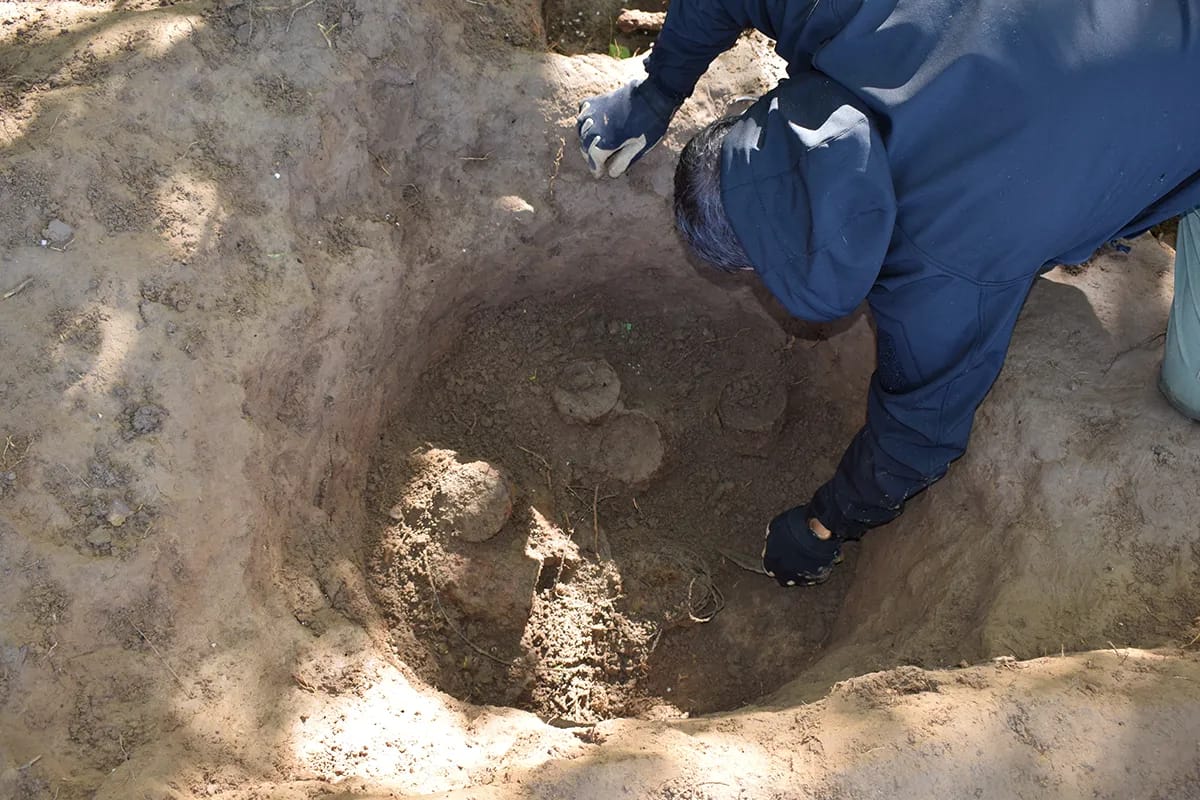
Example of Interpretation: A Recovered Shell Casing
If a .30 caliber short shell casing is found in a trench alongside other remains from the 1940s, it is likely that it was fired on June 6, 1944, and recovered near its impact point. However, if it is discovered in a more recent layer, it has been displaced. An object removed from its original context loses much of its archaeological significance.
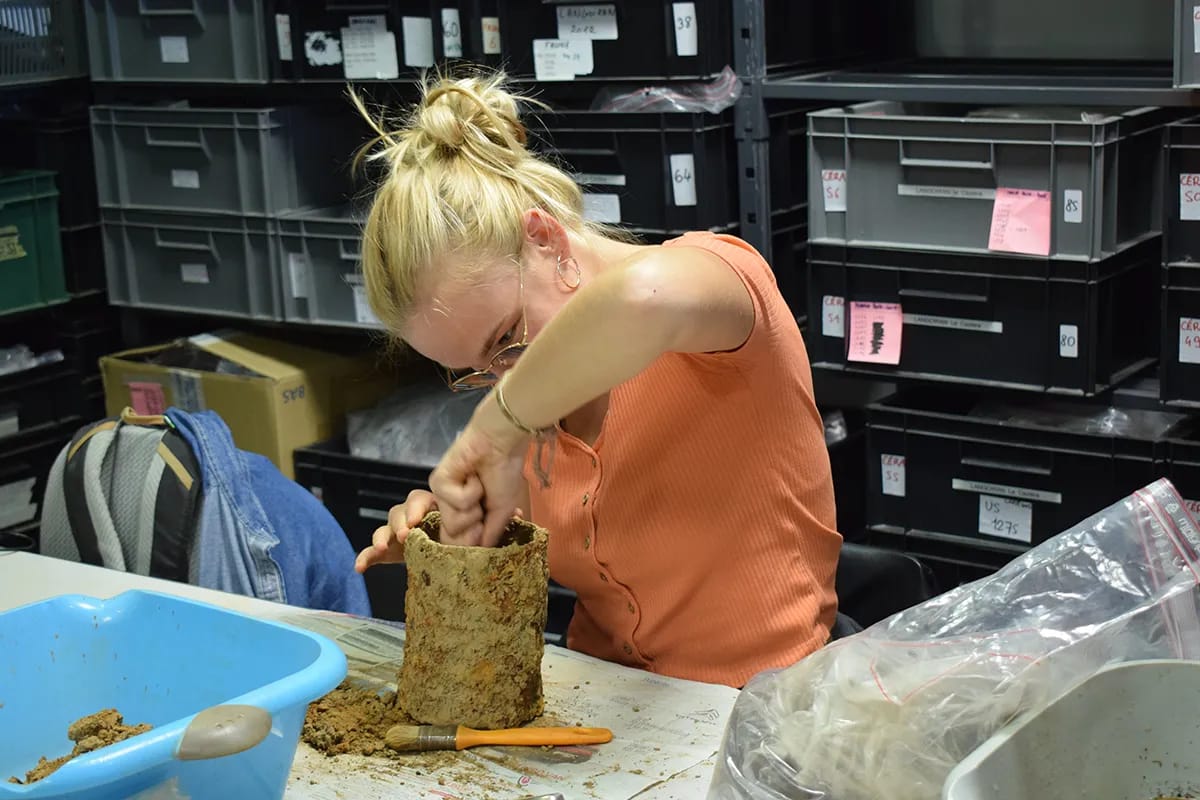
The Brécourt Excavations
In the fall of 2022, research focused on studying the battle traces from June 1944. Photogrammetry was used to create a precise representation of the structures. Elements such as an artillery shell base and steps carved into a trench support the hypothesis that the Americans constructed a path along a former German access route.
The trench of a German artillery battery yielded few personal artifacts but various weaponry elements, including MG-42 machine gun shell casings. These findings suggest that the position was occupied by artillerymen rather than a paratrooper unit, as some narratives had claimed.
The German Battery in Action on June 6, 1944
The study of the remains confirms that the Brécourt guns were indeed 105 mm artillery pieces, contradicting some testimonies. A pit filled with shell casings indicates that the battery fired intensively on the morning of June 6 before being neutralized. A mess tin lid bearing an inscription suggests that an urgent message was sent to the artillery command during the attack.
The Assault of the American Paratroopers
The analysis of bullet impacts and recovered ammunition reveals that the Americans first attacked from the north before advancing southward, corroborating Richard Winters’ narrative. The German defenders offered little initial resistance but later regrouped as they retreated. A Browning machine gun was likely deployed to support the attack.
The Role of Field Hospital 42
Pits containing burned uniform remnants, infusion bottles, and personal items suggest that an American field hospital was established on-site after the battle. This location may have been used to treat hundreds of wounded soldiers, both Allied and enemy.
Traces of the Airborne Invasion
Objects such as fragments of Waco gliders and parachute shroud lines provide evidence of the airborne invasion. Although no glider landed directly on the site, these materials may have been moved and repurposed after the landing.
Memory and Oblivion
After the summer of 1944, the site was gradually abandoned. The pits were backfilled, but traces of the battle remain underground. Today, archaeology allows us to rediscover these events and compare material evidence with historical narratives, which are sometimes imprecise.
Book your tickets
Make the most of your visit by booking your tickets online.
Opening hours
October to April
Every day from 10 am to 6 pm
May to September
Every day from 9:30 am to 7 pm
Ticket sales close
1 hour before museum closes
Pets 🐶
The museum accepts small dogs carried in a bag.
Rates
Adult
10 €
Student
7,50 €
Children from 6 to 15
6,50 €
Children Under 6
Free
Guided tour 45 minutes
+ 2,50 €
Guided tour 1 h 30
+ 5 €
Booking
Ticket Reservations
Tickets can only be booked on our website, not by phone.
Group and School Visits
Visiting with a group? Anything is possible.
We’ll be happy to help you plan an unforgettable visit.
CONTACT
Utah Beach Landing Museum
Plage de la Madeleine
50480 Sainte-Marie-du-Mont
Phone +33 2 33 71 53 35
Email musee@utah-beach.com
